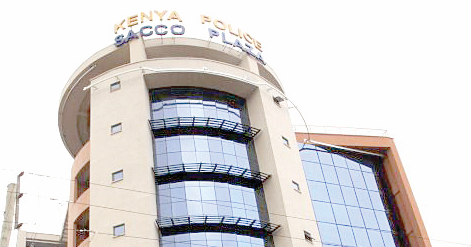Concerns in Sacco sector demand quick attention
By Fred.Aminga, September 11, 2023The cooperative movement, particularly through Savings and Credit Cooperative Societies (Saccos), play a significant role in driving Kenya’s economy.
With an estimated contribution of at least 10 per cent to Kenya’s Gross Domestic Product (GDP) amounting to Sh1.5 trillion, the cooperative sector has provided Kenyans with low-cost access to assets like land, homes, and enterprises.
This sector has allowed individuals to invest and grow their wealth countrywide as a parallel offering alongside banks.
By pooling resources and sharing risks, Saccos help members manage financial risks more effectively. This risk mitigation allows members to engage in economic activities with greater confidence and stability.
However, there are emerging challenges and concerns within the Sacco sector that need quick attention.
The surge in Kenyans with substantial sums, exceeding Sh1 million, in Saccos is a positive sign, indicating that higher-earning individuals are seeking better returns on their savings in the sector. However, there are worrisome trends, such as the rise in fraud cases targeting Saccos which must be dealt with to ensure the sector thrives.
According to the Sacco Societies Regulatory Authority (Sasra), Saccos have lost some Sh118.1 million, to fraud in the past two years. These cases of fraud exploited weak internal controls and targeted mobile money services like M-Pesa.
This raises the alarm for enhanced protection of the Sacco sector, especially given the increasing prevalence of cyberattacks and breach-related fraud.
To protect members’ billions of shillings and ensure the security of the Sacco sector, Saccos must continue investing in firewalls and robust internal controls including enhanced cybersecurity measures to prevent fraud and cyberattacks.
Further, all Saccos must consider comprehensive insurance coverage that protects against financial losses due to an increase in fraud or other unforeseen circumstances. Insurance can provide a major safety net for members’ deposits.
Given Sacco’s important role in wealth creation, risk mitigation, and role in enhancing economic stability and prosperity at both the individual and community levels, Saccos and their members must work together to address challenges and ensure the continued growth and sustainability of the cooperative movement in Kenya.
However, members of Saccos must also remain vigilant and actively participate in the governance of their Sacco. They must report any suspicious activities and advocate for transparency and accountability in all aspects of the operations.
The tell-tale signs are always there, for example, if the quality of services dips, that is a red flag since Saccos should compete with banks by offering efficient and modern services.
One of the primary reasons individuals join a Sacco is to access credit facilities.
If a Sacco consistently delays loan disbursements or fails to issue loans altogether, it may be a sign of financial instability or mismanagement. A delay of more than six months in disbursing funds should be a red flag.
A strong Sacco should be able to provide members with timely access to their funds. If you encounter difficulties accessing your savings or securing loans when needed, it may indicate financial instability within Sacco.
Incessant leadership conflicts within the Sacco can compromise the quality of services provided to members. Disputes among board members or committee members may affect Sacco’s overall performance and could be a reason to leave.
Monitor changes in benefits, such as interest rates, loan limits, and dividend pay-outs. If Sacco reduces these benefits significantly over time, it may no longer align with your financial goals.
Members must also familiarise themselves with Sacco’s exit processes, which typically involve receiving dues within 60 days after submitting a written notice of exit. Delays or obstacles in these processes should be reported and addressed.
— The writer is a Business Editor at People Daily
More Articles

